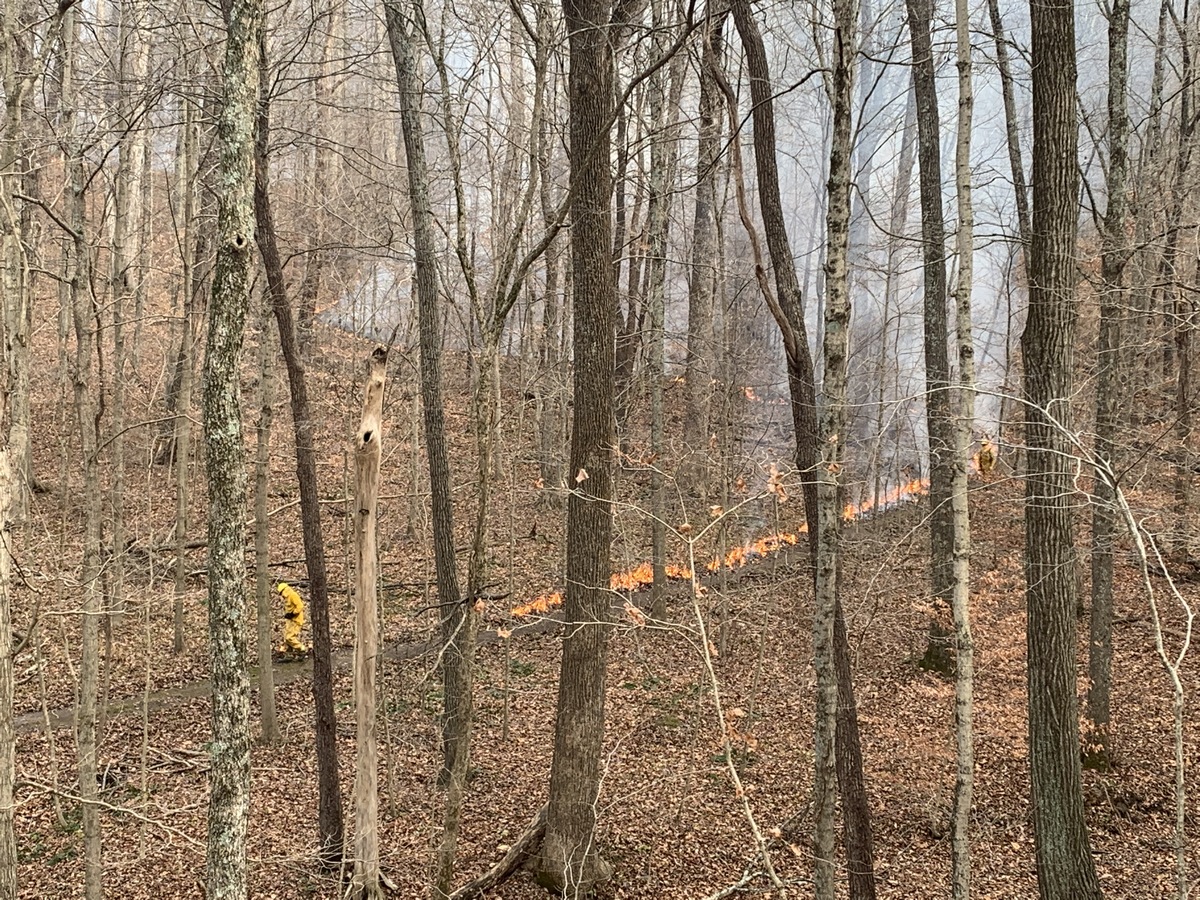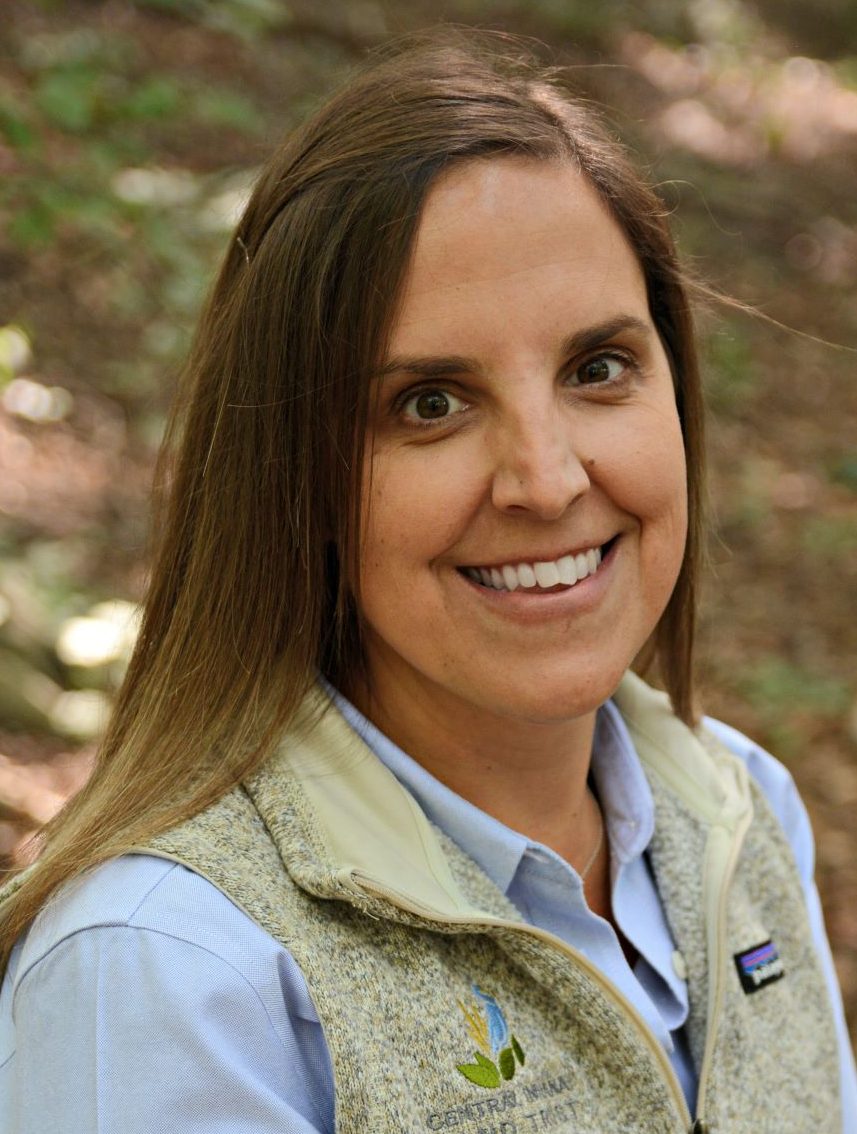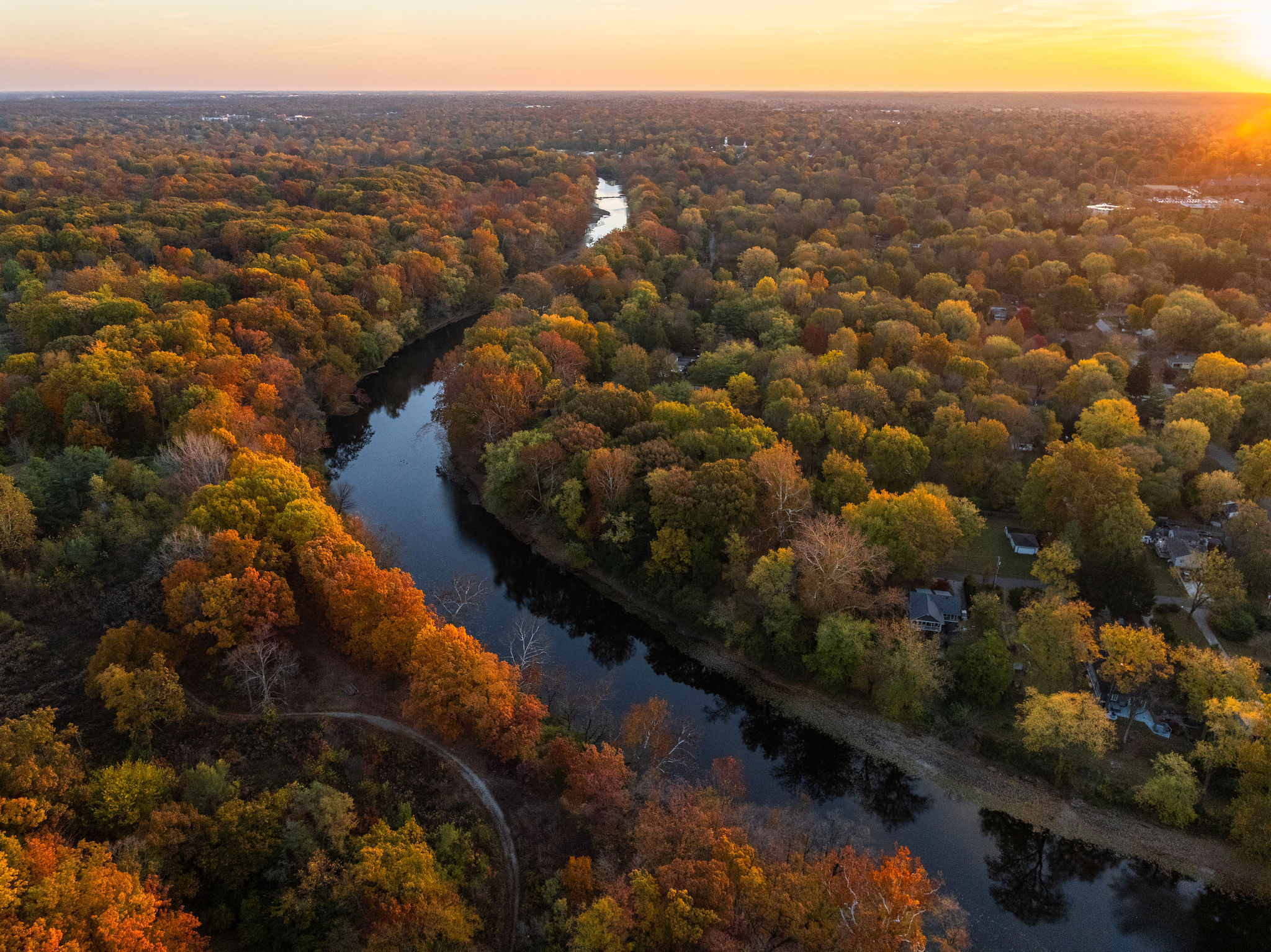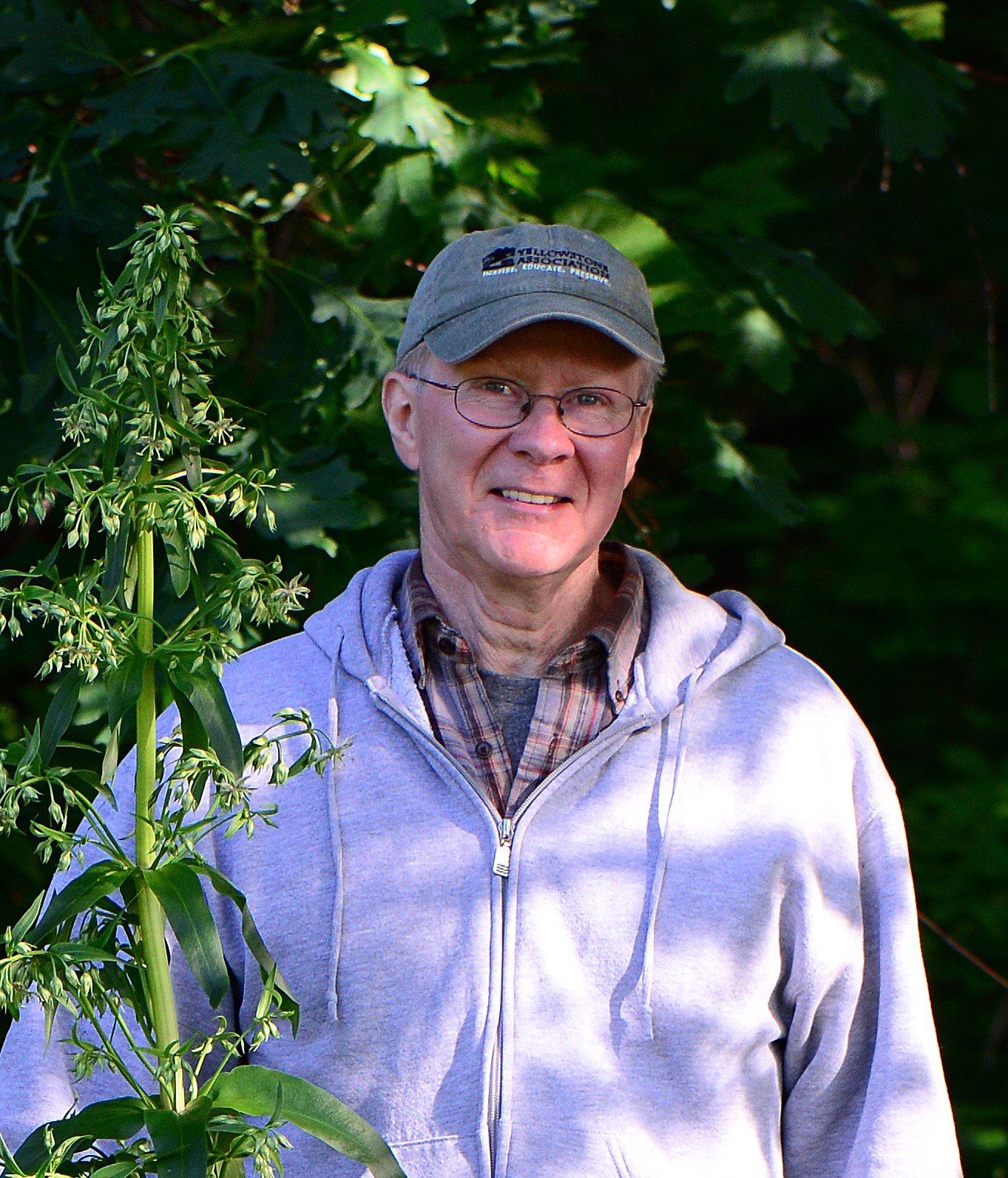
Controlled Burn at Blossom Hollow
Controlled Burn at Blossom Hollow
Controlled Burn to Provide Data for Natural Area Management
Written By: Shawndra Miller
Date Published: December 8, 2020
Shawndra Miller
The sight of fire in the woods might feel a bit jarring in the wake of so much wildfire destruction in other parts of the world. But fire has always been a factor in shaping the landscape. In conservation work, we can use it strategically to help restore the land. That was the plan for a recent controlled burn at The Laura Hare Preserve at Blossom Hollow.
We contracted Davey Resource Group (a local environmental company) to lead the burn in 16 acres of oak woodland. Our main objective was to document species response. We are partnering with Eco Logic, a local ecological restoration group, to conduct this study of fire’s impact on the land, as measured by three plots designated for: 1) fire, 2) fire combined with thinning of woody species, and 3) a control plot.
The hypothesis is that oaks and hickories will fare well, while sugar maples will decline. Overall forest health should improve, with greater flowering and seed set of species that have been struggling in shade.
For example, plants like dryland blueberry have likely been starved for light in the shade of beeches and maples. These are species that have probably been on the property for hundreds if not thousands of years, but have been struggling to survive with fire suppression during the last few decades. Reintroducing fire in this oak woodland should support these understory plants and the entire native plant community there.
Further, in our annual bird monitoring of the site, the cerulean warbler is seen occasionally. We project that burning, combined with thinning, will allow more ceruleans to use this land.
Data collected to support or refute our hypothesis will help build an evidence-based approach to managing natural areas.
In addition to our study, data will be collected for a separate study. Franklin College biology professor Alice Heikens and her students have been researching the cancer root that thrives in this natural area. They will be documenting the impact of fire on this unusual native plant.
While fire is a natural process, uncontrolled burns rarely occur in Indiana. So the conservation community uses controlled burns to ensure ecosystems thrive. Fire is an excellent natural management tool and can greatly benefit the land by helping to control invasive species. Generally, invasive species are intolerant of fire and will either die back or become stunted in growth.
Interestingly, not all of the area inside the burn block burned. As executive director Cliff Chapman put it, “The fire decides, not us, what burns and what doesn’t. We truly are reintroducing a natural process not just using fire as a tool like a hammer.”
Blossom Hollow, part of the Hills of Gold Conservation Area in Johnson County, makes up 149 acres total. Its forest interior habitat is crucial for species vulnerable to “edge effect,” like Eastern box turtles and migratory warblers.

Ben Valentine
Guest Blogger
Ben Valentine is a founding member of the Friends of Marott Woods Nature Preserve and is active in several other conservation organizations. He leads a series of NUVO interviews with Indiana's environmental leaders, and he cherishes showing his son all the wonders of nature he grew up loving.

DJ Connors
Guest Blogger
DJ Connors, a Central Indiana native and late-to-life hunter, combines a lifelong appreciation for wildlife and the outdoors with a deep passion for exploring the natural beauty of the area he has called home for most of his life. As a husband and father of three, he is committed to ensuring his children have the same opportunities to connect with nature and appreciate the outdoors in their community. DJ’s unique journey into hunting emphasizes sustainability, responsible stewardship, and the importance of preserving these experiences for future generations.

Bridget Walls
Guest Blogger
Bridget is our first ever Communications and Outreach Intern. She is a graduate of Marian University, where she combined English, studio art, and environmental sciences in her degree studies. As treasurer for Just Earth, the university's environmental club, she helped plan events encouraging a responsible relationship between people, nature, and animals.

Jordan England
Guest Blogger
Jordan England is a lifelong Shelby County resident who graduated from Waldron Jr. Sr. High School (just a few miles from Meltzer Woods!). After earning her B.S. degree in Retail Management from Purdue University, she returned to Waldron to start a family with her husband, Brian. Together they have 3 young children and enjoy sharing with them their love of the community. Jordan is the Grants and Nonprofit Relations Director at Blue River Community Foundation, managing BRCF’s grant program, providing support to local nonprofits, and promoting catalytic philanthropy in Shelby County.

Cliff Chapman
President and CEO
As CILTI’s President and CEO, Cliff keeps CILTI’s focus on good science and stewardship. He’s mindful that the natural places you love took thousands of years to evolve and could be destroyed in a single day, and that knowledge drives his dedication to their protection.

Stacy Cachules
Chief Operating Officer
Among her many key duties as Assistant Director, Stacy has the critical task of tracking our budget, making sure we channel donations for maximum efficiency. When her workday’s done, Stacy loves to spend time with her two young boys—and when not traveling, she’s likely planning the next travel adventure.

Ryan Fuhrmann
Vice Chair
Ryan C. Fuhrmann, CFA, is President and founder of Fuhrmann Capital LLC, an Indiana-based investment management firm focused on portfolio management. Ryan’s interest in land conservation centers around a desire to help preserve natural habitats for wildlife and the subsequent benefits it brings to people and the environment.

Joanna Nixon
Board Member
Joanna Nixon is the owner of Nixon Consulting, an Indianapolis-based strategy and project management firm focused on the nonprofit sector. She currently serves as the Philanthropic Advisor for the Efroymson Family Fund. Prior to opening her consulting practice in 2000, Joanna was vice-president for grantmaking at Central Indiana Community Foundation (CICF). Joanna has more than 25 years of experience in the nonprofit and arts and culture sector. She is passionate about the environment and loves bringing big ideas to life and creating high-quality arts and culture programs and experiences. Joanna enjoys outdoor adventures, including competing in fitness obstacle course races and hiking with her high energy Australian Cattle Dog, Jackson.

Karen Wade
Board Member
Before retiring, CILTI board member Karen Wade worked for Eli Lilly & Co. In retirement she volunteers for a number of organizations, including the Indiana Master Naturalist program, Johnson County Native Plant Partnership CISMA, Meadowstone Therapeutic Riding Center, and Leadership Johnson County.

David Barickman
Development Systems Manager
Born and raised in Central Illinois, David spent many days as a child wandering around the river, forest and lakes there. He works behind the scenes as a key member of our fundraising team. When not working, David loves to be outdoors hiking, fly fishing, kayaking or woodworking.

Jamison Hutchins
Stewardship Director
Jamison leads our stewardship team in caring for the land that is so important to you. He comes to our team after eight years as Bicycle and Pedestrian Coordinator for the city of Indianapolis, where his work had a positive impact from both health and environmental perspectives.

Jen Schmits Thomas
Media Relations
An award-winning communicator and recognized leader in Central Indiana’s public relations community, Jen helps us tell our story in the media. She is the founder of JTPR, which she and her husband John Thomas own together. She is accredited in public relations (APR) from the Public Relations Society of America, and loves to camp and hike in perfect weather conditions.

Shawndra Miller
Communications Director
Shawndra’s earliest writing projects centered around the natural world, starting when a bird inspired her to write her first “book” in elementary school. Now she is in charge of sharing our story and connecting you to our work. Through our print and online materials, she hopes to inspire your participation in protecting special places for future generations.

Phillip Weldy
Stewardship Specialist
Phillip enjoys nature’s wonders from an up-close-and-personal perspective as he works to restore the natural places you love. As an AmeriCorps member in Asheville, NC, he had his first full immersion in relatively undisturbed land while reconstructing wilderness trails in National Parks and National Forests.


December 16, 2025
In Montgomery County, we recently assisted the DNR Division of Nature Preserves expand Spring Creek Seeps Nature Preserve. A 30-acre tract adjoining the preserve is now protected in perpetuity.
Newsroom,Properties


December 11, 2025
Brown County is beloved for its vistas of iconic Southern Indiana hills. Now the forests under protection in the county include another 89 acres. That’s all thanks to our members’ generosity!
Betley Woods,Blossom Hollow,Callon Hollow,Homepage,Newsroom,Properties


December 9, 2025
Board member Ryan C. Fuhrmann, CFA, is President and founder of Fuhrmann Capital LLC, an Indiana-based investment management firm. As our incoming board chair, Ryan brings a strong desire to preserve natural habitats for wildlife. We asked him to share his perspective on making gifts of stock to the [...]
Newsroom




























